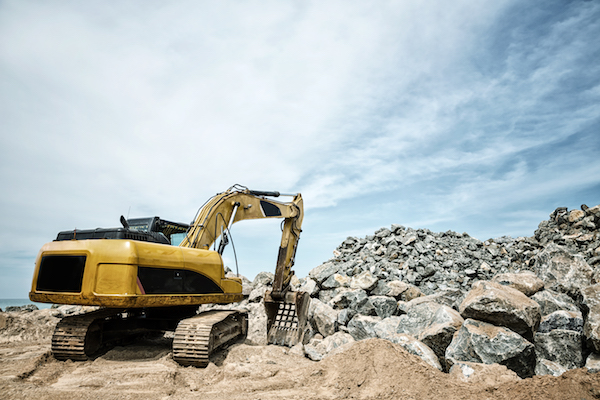Typically, when there’s new construction, there’s excavation. But what is excavation and what all does it include? It’s simply the process of moving earth, rock and other materials with the right heavy equipment, tools, or in some cases, explosives. It includes trenching, wall shafts, earthwork, tunneling and underground work.
Excavation incorporates a number of important applications including environmental restoration, construction, exploration and mining.
Construction is one of the most common applications for excavation. It is used to create building foundations, reservoirs, and roads. Some of the processes included are trenching, digging, dredging, and site development. They each require unique tools, machinery and techniques to get the job done correctly. The processes used will depend upon the structure that will result from the final construction job.
Before we can even begin the process, we must carefully examine the site to ensure that the natural habitat or artifacts surrounding the property are preserved throughout the excavation. Toledo, and the surrounding areas is built on a swamp, and the wetlands must be considered before any project can begin. After that, the plans for the size and depth of the site are made, and we will make drawings from them to clearly mark the boundaries. Once these two steps have been taken, we can begin the work.
The entire excavation process includes:
- setting out corner benchmarks
- surveying ground and top levels
- excavation to the approved depth
- dressing the loose soil
- the construction of dewatering wells and interconnecting trenches
- making boundaries of the building
- the construction of protection bunds and drains
Beyond major construction work, there are times when excavating is necessary for sewer lines or utility lines. Reaching underground utilities can be difficult and should never be repaired or replaced without the proper knowledge and experience.
In some cases, we will use an alternative to heavy equipment, by utilizing the process known as hydro-excavation. With the use of our Vactor truck we can greatly reduce the cost of digging round buried utility lines. Without the use of heavy equipment, drilling or the use of machinery with metal and sharp edges, it helps avoid the cost of any damage caused by power outages, broken water pipes or gas explosions that can result from a backhoe or trencher hitting a line that was hidden. It also means that we can continue to plan and work in areas where utilities are close together.
Below ground utility infrastructures are becoming more and more congested as they are adapted to accommodate greater demands. This has led to increasing safety and financial concerns when there is a need to locate and expose such utilities. Using non-destructive water technology, we can quickly, safely and economically excavate in areas inaccessible to conventional digging equipment, even where pressure gas lines and pipelines are present.
More than just operating equipment and digging a hole, our technicians have the experience and skill required to ensure that your job is done right the first time. We follow all state and local laws and work safely around your existing utilities. The safety of businesses, homes and the people we service is the number one priority of our crewmembers.
Our experience is widely used in commercial excavation in Toledo, and surrounding areas. If your project requires any amount of excavation, please give us a call, and we will have someone meet you on-site to determine the best course of action.

